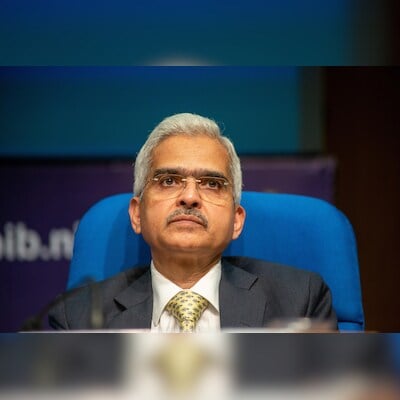)
Reserve Bank of India governor Shaktikanta Das (Photo: Shutterstock)
With India being one of the few large economies where there is a 24×7 real-time gross settlement system (RTGS), the feasibility of expanding RTGS to settle transactions in major trade currencies, such as the US dollar, the euro, and the pound sterling, can be explored through bilateral or multilateral arrangements, Shaktikanta Das, governor, Reserve Bank of India (RBI), said on Monday.
RTGS is an integrated payment and continuous (real-time) settlement system developed by the RBI, whereby banks and financial institutions transfer funds (both for customers and inter-bank transactions) to one another on an immediate, final, and irrevocable basis.
India and a few other economies have already begun efforts to expand the linkage of cross-border fast payment systems in both bilateral and multilateral modes, the governor said, speaking at a high-level conference organised by the RBI in Delhi.
The RBI governor also highlighted that remittances are the starting point for many emerging and developing economies, including India, to explore cross-border peer-to-peer (P2P) payments. “We believe there is immense scope to significantly reduce the cost and time for such remittances,” he said.
Additionally, central bank digital currencies (CBDCs) are another area with the potential to facilitate efficient cross-border payments. India is one of the few countries that have launched both wholesale and retail CBDCs, Das said.
“Programmability, interoperability with the Unified Payments Interface (UPI) retail fast payment system, and development of offline solutions for remote areas and underserved segments of the population are some of the value-added services we are now experimenting with as part of our CBDC pilot,” Das said, adding that going forward, harmonisation of standards and interoperability would be important for CBDCs for cross-border payments and to overcome the serious financial stability concerns associated with cryptocurrencies.
Meanwhile, Das emphasised that in the modern world, with deep social media penetration and vast access to online banking, where money transfers happen in seconds and rumours and misinformation can cause liquidity stress, banks have to remain alert in the social media space and also strengthen their liquidity buffers.
He also highlighted that while artificial intelligence (AI) and machine learning (ML) have opened new avenues of business and profit expansion for financial institutions, these technologies also pose financial stability risks. “Heavy reliance on AI can lead to concentration risks, especially when a small number of tech providers dominate the market. This could amplify systemic risks, as failures or disruptions in these systems may cascade across the entire financial sector,” he cautioned.
“Moreover, the growing use of AI introduces new vulnerabilities, such as increased susceptibility to cyberattacks and data breaches. Additionally, AI’s opacity makes it difficult to audit or interpret the algorithms that drive decisions. This could potentially lead to unpredictable consequences in the markets,” he further said.
As a result, Das cautioned that banks and other financial institutions must implement adequate risk mitigation measures against all these risks. “In the ultimate analysis, banks have to ride on the advantages of AI and Big Tech and not allow the latter to ride on them,” he said.
Speaking about the emerging risks to financial stability, Das highlighted that the divergence in global monetary policies — monetary easing in some economies, tightening in others, and pausing in several more — can be expected to lead to volatility in capital flows and exchange rates, which may disrupt financial stability. This was evident during the sharp appreciation of the Japanese yen in early August, which led to disruptive reversals in the yen carry trade and rattled financial markets across the globe.
Further, the private credit markets have expanded rapidly with limited regulation, posing significant risks to financial stability, particularly since they have not been stress-tested in a downturn, Das warned.
He also noted that higher interest rates, aimed at curbing inflationary pressures, have led to increased debt servicing costs, financial market volatility, and risks to asset quality.
“Stretched asset valuations in some jurisdictions could trigger contagion across financial markets, creating further instability. The correction in commercial real estate (CRE) prices in some jurisdictions can put small and medium-sized banks under stress, given their large exposures to this sector. The interconnectedness between CRE, non-bank financial institutions (NBFIs), and the broader banking system amplifies these risks,” Das warned.
First Published: Oct 14 2024 | 11:25 AM IST
